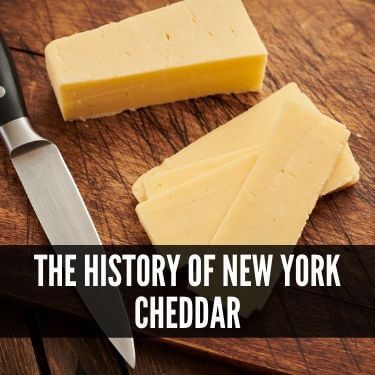Learning how to safely ship cheese involves some important details that can’t be overlooked. Shipping anything can be a challenge, but a delicate commodity like cheese is often even more complicated. There are more things to consider other than just the delivery time and method. Ignoring any of the essential details when shipping cheese can lead to spoiled goods which means money wasted.
When shipping cheese, one of the most important details to adhere to is proper shipping and storage temperature. According to 21 CFR 133, most cheeses should be stored at 35 ° F. Additionally, proper packaging of cheese will prevent contamination and ensure appropriate quality of the final product.
Our guide below provides you with everything you need to know to safely ship cheese.

When packaging your cheese, you have to think about two things:
Preservation refers to maintaining the proper taste and texture of the cheese upon consumption. Packaging plays a big role in preservation as ineffective packaging can lead to a negatively altered taste. Consumers that purchase cheese with an undesirable flavor may be unwilling to buy the same brand again, causing you to lose out on repeat business.
Good taste is one thing, but preventing contamination is a whole other subject. Cheese manufacturers and distributors must properly package cheese intended for consumers to prevent contamination.
The packaging that your cheese is shipped in will depend on what stage of the manufacturing cycle the cheese is currently in. If the cheese hasn’t been packaged for the end consumer, it’s generally shipped in bulk blocks, encased in wax paper to preserve and protect. Cheese that has been packaged for the end consumer should be contained in an air-tight, usually plastic, package. The air-tight packaging prevents possible outside contaminants from coming into contact with the cheese.
Alongside this, cheeses then get put into cartons and placed into mesh containers - or lockable shipping boxes. They’re safely put together inside the same shipping box, so there’s little room for movement. This keeps everything tightly packed and well protected.
If you ship perishables, you have to take the temperature into account. With something like cheese, you need to ship it within a specific temperature range. If you don’t, then serious problems will occur, potentially ruining your entire shipment.
Store your cheese below 35° fahrenheit, and there’s a strong chance it will dry out. This means it becomes much harder than usual, and it will also shrink in size. As such, this can mess up your entire shipment and lead to a significant loss of money.
Similarly, if your cheese is stored at too warm of a temperature for too long, then it will spoil. The cheese itself will likely expand in size, meaning it can rip through the packaging. When this happens, mold can easily form on the cheese, ruining it. Again, this destroys your shipment and means you lose a lot of money.
As noted above, the FDA outlines recommended temperature to ship cheese at in 21 CFR 133. The standard recommended temperature is 35° F. Few situations should warrant any variation in shipping temperature.
When arranging a shipment for your cheese, communicate your needs to the carrier. Ensuring that the carrier you work with will be able to meet your needs is vital to the success of your shipment.
New York sees a large production of cheese every year. This is because there’s a large percentage of dairy farmers in this state. These farms have cows that produce milk for various cheeses. From here, the milk is typically sold to some form of a cheese production plant.
Naturally, these cheese production plants take the New York milk and turn it into different types of cheese. New York cheddar is a firm favorite, but mozzarella is also a popular cheese in this state. The cheese is then preserved and packaged, ready for shipping.
At this point, transportation companies deliver the cheese to its’ final end point where consumers will purchase it. This can include restaurants, grocery stores, or even dedicated online cheese shops.

New York cheddar cheese is noted for its distinctive taste that’s different from other types of cheddar . Tastewise, it’s quite sharp, and there’s usually a hint of smokiness to it as well. Compared to other cheddars, the New York style is also much softer, so it requires extra care when shipping.
According to Gordon Edgar, author of Cheddar, New York’s first cheddar factory was opened in 1851. This wasn’t just the first cheddar factory in the state, it was the first one throughout the entire country. As such, many people believe that New York was the birthplace of modern cheddar.
Before this, cheddar cheese was commonly made on the farm - usually by women. But, this was the first instance where people started thinking about mass producing cheese. The factory was set up to get local farmers to bring all of their milk to one place. They’d get paid for it, then the factory would make and distribute the cheddar.
This completely changed the entire cheddar supply chain and manufacturing method. It soon caught on, and more factories were built in and around the state.
Shipping cheese can be complicated, but working with a reliable transportation and logistics company can take care of these. R+L Global Logistics has the knowledge and experience to handle all of your refrigerated shipping needs, including shipping cheese. Our team of transportation experts will arrange for the safe transport of your cheese providing you with visibility and transparency throughout the entire process.
In addition to truckload freight shipping for transporting your goods, our logistics services provide a comprehensive service offering. Our logistics services include:
When you’re ready to schedule your shipment or want to know more about our service, give us a call at (866)353-7178. We’re ready to help make your next cheese shipment smooth and hassle-free.
R+L Global Logistics
315 NE 14th St., Ocala, FL 34470